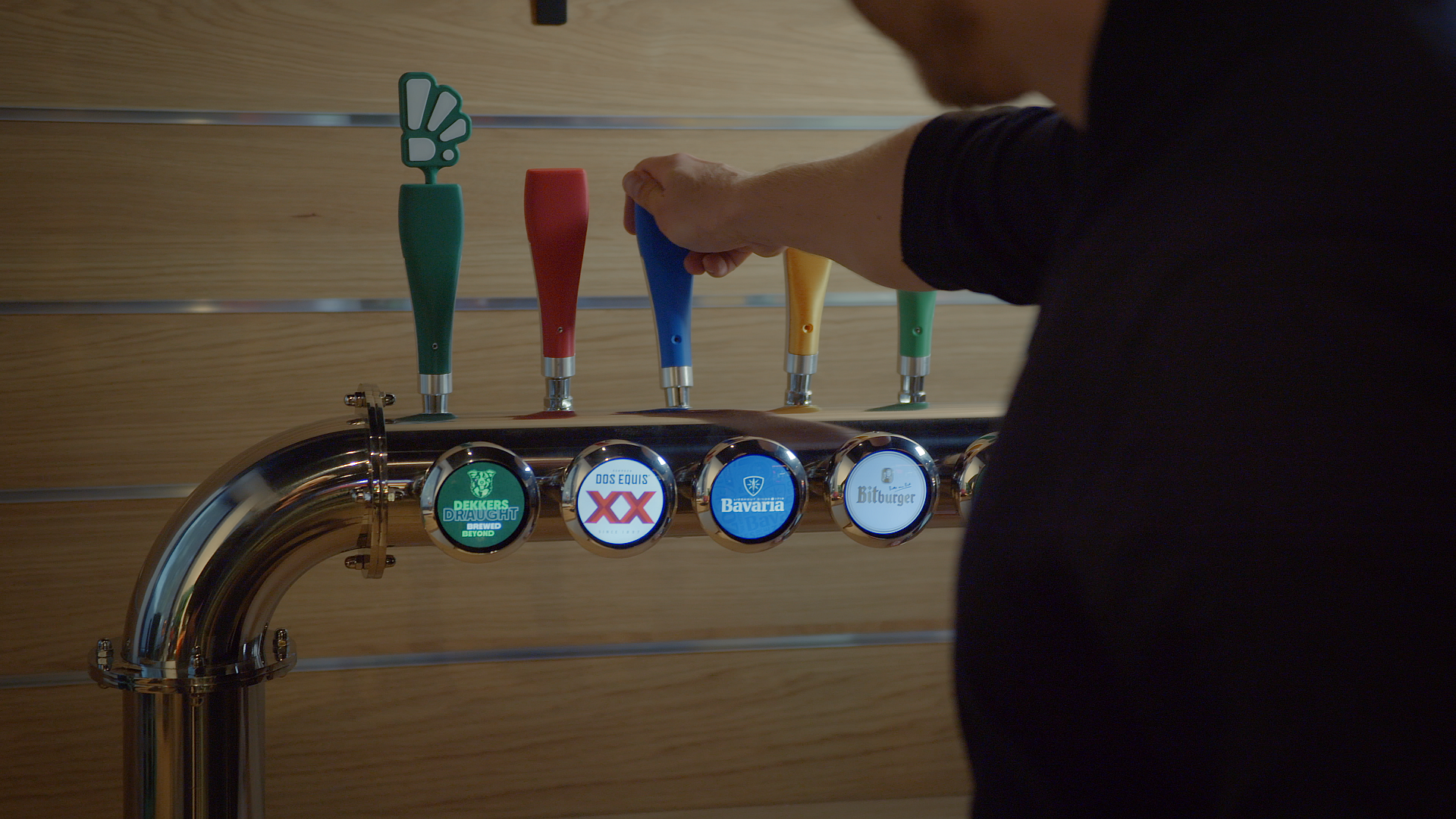Making a device connected: four practical lessons
More and more businesses are making their products connected. With Lattiz, its smart milk solution, FrieslandCampina is about to do the same. The new generation of Lattiz machines introduces a host of possibilities, including rolling out software updates remotely. What could other organisations learn from this project?
Lattiz is a professional milk foaming solution for the hospitality sector. With just the push of a button Lattiz creates consistently high-quality milk foam, allowing business owners to serve a perfect coffee every time, as well as save time and increase sales. Staff no longer have to foam milk by hand, which is a big time-saver. Lattiz makes foaming milk much simpler, which means that new employees will quickly be able to prepare lattes and cappuccinos. It’s also still possible to create latte art, so you’ll have the same luxurious, delicious coffee, only easier.
Lattiz’s innovation lies in the combination of the machine and the specially developed milk packaging. The milk is foamed very efficiently and doesn’t need to be cooled down, causing Lattiz’s carbon footprint to be 20% lower than that of alternative foaming methods. Alongside that, Lattiz complies with the very highest hygiene requirements. There is no contact between the barista, the milk foam or the machine, and the machine cleans itself automatically.
The renewed Lattiz is connected
The first version of the Lattiz was introduced in 2015. There are now more than 10,000 of these in use in Europe. Meanwhile, the second generation of Lattiz machines is also on the market. The new Lattiz has improved on several fronts. It has a touchscreen instead of buttons and is much quieter, while the quality of the milk foam stays constant throughout the machine’s lifetime. The renewed Lattiz also includes more sensors and is far more software-driven, making software updates more important than ever.

As Lattiz project manager, Janneke Tuinte is one of the driving forces behind the new machine’s development. Along with Niels van der Putten, responsible for developing the connected side of Lattiz, she takes a look back at the development journey. What challenges did the team encounter, and how might other companies prepare themselves for these?
- Think big, but start small
“When we began the project, our expectations for making Lattiz connected were sky-high,” Tuinte recalls. “There were also several consulting parties thinking up all sorts of fantastic ideas. The concept kept growing bigger and bigger, but became totally unrealistic. In the end we scaled everything back down to remote access for software updates and insight into the machinery.”
“If you start on an IoT solution with grandiose goals, then everyone within the organisation is going to have huge expectations of it,” Van der Putten adds. “But then, as soon as the concept becomes smaller and more realistic, you’ll see enthusiasm drop. Software updates are not that appealing to management – it sounds very much like an IT project. In order to maintain internal support you’d have to do something like develop an app just so that the project remains ‘sexy’.”
When it comes to technology, Van der Putten says it’s important to think both short and long term. “You need to have a clear image of where you want to go, because the wrong technology choices will limit your options later. But you also need to start small in order to lay the foundations in such a way that the entire ecosystem can be kept involved throughout the process. That’s why we began with ‘over-the-air’ software updates. With an expanding connected fleet of Lattiz machines we can then develop new services such as remote servicing and remote updating of recipes. These developments will be data-driven, involving clients and partners, and will be added step by step.” - Make the advantages tangible for the business
“In the beginning, the concept we devised was very broad, at which point we carried out a feasibility study among partners and clients,” says Tuinte. “From that it appeared that many things were not realistic or didn’t fit in with our partners’ existing processes, and so we began working on a roadmap that lays out a technological foundation for fleet management in Salesforce and ‘over-the-air’ software updates. That made the advantages very obvious.”
The project manager stresses that the business profits directly from the possibility to roll out updates remotely. “We no longer need to go to the machine in person. Previously, for example, a partner would have to install the update on location with a USB stick. This creates extra costs and, moreover, you’re incredibly dependent on the availability of partners and clients, which slows down the processes, especially abroad. Given the growing number of machines and our international ambitions, remote access is very valuable.” - Don’t underestimate the impact
An IoT project affects all kinds of processes, both within and outside of the organisation. “If you introduce a connected device, then the whole chain has to follow,” Tuinte explains. “So not only the machine’s manufacturer and the software developer, but also service partners who are used to mainly mechanical devices. Furthermore, this project had a large impact on the Lattiz team itself. Everyone in the company had to get on board, from sales and marketing to customer service.”
“Developing a connected device isn’t just about the device,” says Van der Putten. “It requires an analysis of the entire chain of processes throughout the organisations, involving everyone from the supplier to the organisation itself to partners and clients. In other words, the whole ecosystem. It influences everything, and the weakest link can affect the outcome of the journey. The biggest challenge, therefore, is achieving organisational coordination, attaining a new level of professionalism both within the own organisation and beyond. You need to think carefully about the benefits for the different parts of the organisation and partners and clients, otherwise they won’t budge.” - Work with a knowledge partner
Tuinte advises other businesses to join forces with an expert when setting up an IoT project. “KPN first of all provides the sim cards and the IoT connectivity for the new Lattiz, and sim-card management is also handled by KPN’s platform. But KPN’s role as an objective sparring partner was even more valuable to us. In the beginning we knew hardly anything about IoT and KPN was able to give us a crash course. We knew we could always call our ‘secret helpline’ if we needed to.
“Of course, KPN has a commercial interest in providing their support, but we could really see just how important it was to KPN that the concept would succeed,” Tuinte concludes. “They thought critically about substantive choices and were always ready to help us. KPN’s drive and reliability really have helped us so much.”




